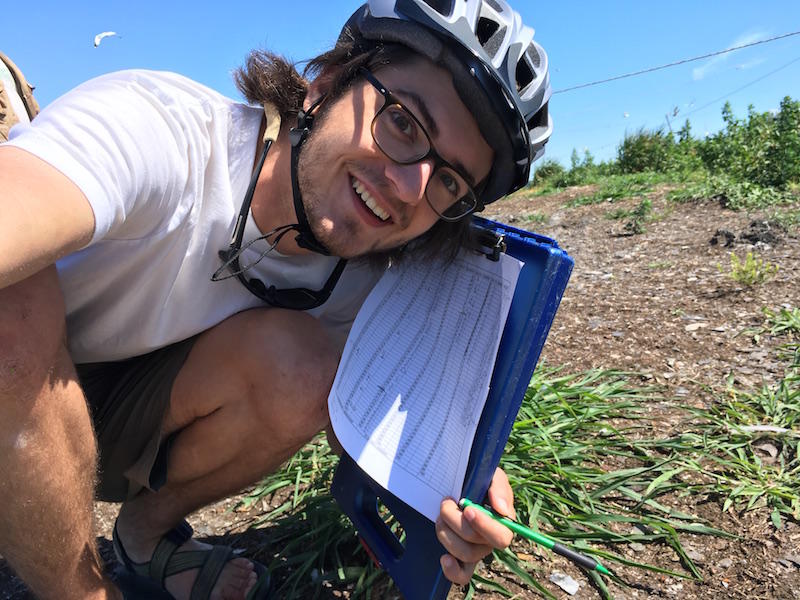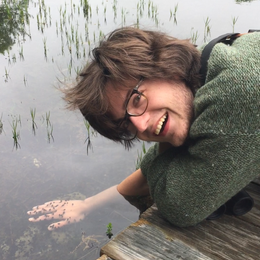Sam Blair is Audubon Vermont’s first UVM Conservation Education Fellow, a position which involves broad participation in the organization’s many conservation and nature education initiatives. This article is part of a series of “field notes” pieces, written to give the community a fellow’s-eye view of the exciting and important work being done by Audubon Vermont every day.
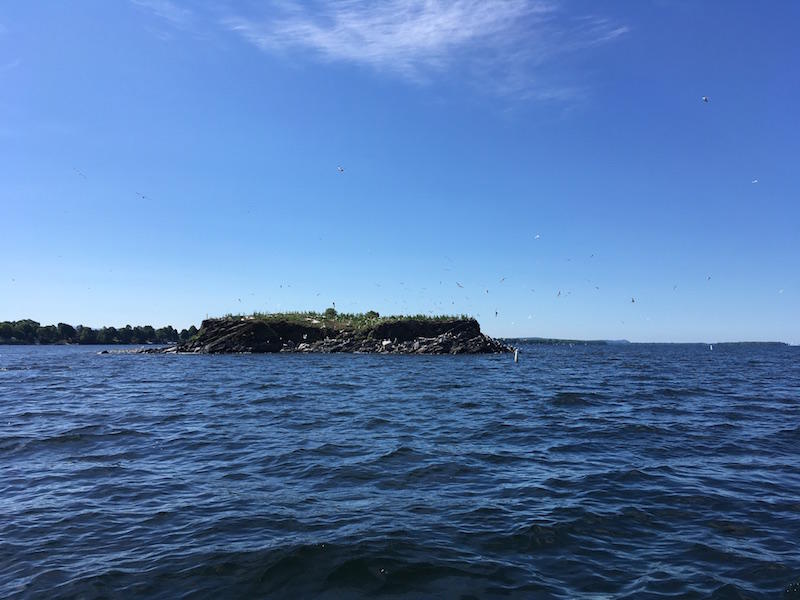
My journey to Popasquatch Island began around 8 am on a Wednesday morning, with me lugging a weighty gas can down the North Hero town pier to Audubon Vermont’s tern biology research boat. This impressive-sounding vessel is actually a fifteen-foot skiff captained one day a week by Mark LaBarr, Audubon Vermont’s Conservation Program Manager, with the help of Conservation Intern/First Mate Lena Heinrich.
Mark has been studying the Common Tern population on Lake Champlain since 1988, and has run Audubon Vermont's Common Tern Recovery Project since 1997. When he first started working with these birds, their numbers on the lake were at an all-time low of fifty breeding pairs. Since then, in partnership with the Vermont Department of Fish and Wildlife, the Lake Champlain Land Trust, and even Ben and Jerry's, Audubon has worked to give important Common Tern nesting sites on the lake special listing and to improve their functionality as habitat for the terns. Due in large part to these efforts, the Common Tern population on Lake Champlain today holds steady at around two hundred breeding pairs. Today's visit to Popasquash Island, the largest nesting site on the lake, is part of Audubon's ongoing work to monitor the health of the population.
Gas and crew on board, Mark gets the motor running, and in a few minutes we are heading out of the bay at a surprisingly high speed. We slow near two small islands, Hen Island and Gramma’s Island, that are known tern breeding sites. At the moment both are unoccupied, so we continue past them. Five nautical miles later, Popasquash Island appears off our starboard bow..
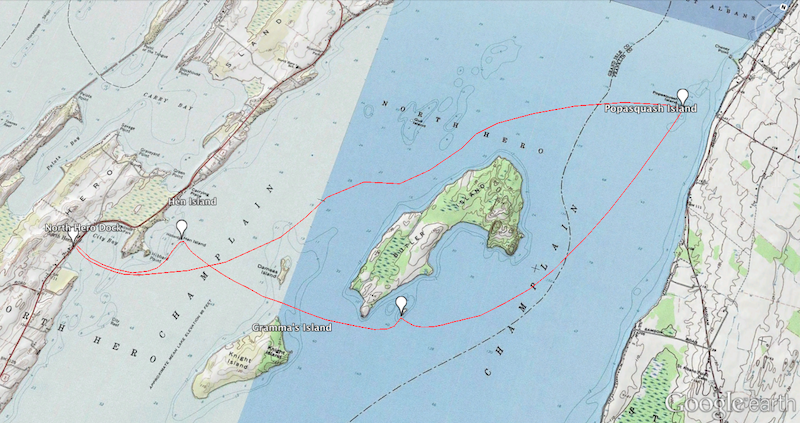
We arrive at the southern tip of the island and drift towards shore. All around us clouds of seabirds rise into the air, clearly displeased at our presence. I am equipped with a bike helmet, a clipboard, and a data sheet, as well as my trusty chacos - which I imagine will give me an escape route in the event that I am literally chased off this tiny island by angry seabirds.
A good example of Lake Champlain's regional geology, Popasquash Island is basically a big pile of contorted shale, with bedding planes displaced to a near-vertical angle. It must have veered a little too close to the Champlain Thrust Fault about 450 million years ago. Every step is unstable and crunchy, which I quickly discover is anxiety-inducing when one is trying to avoid stepping on tern eggs. Flights of attacking adults, who divebomb our heads with an impressive go get 'em attitude, do not make the task any easier.
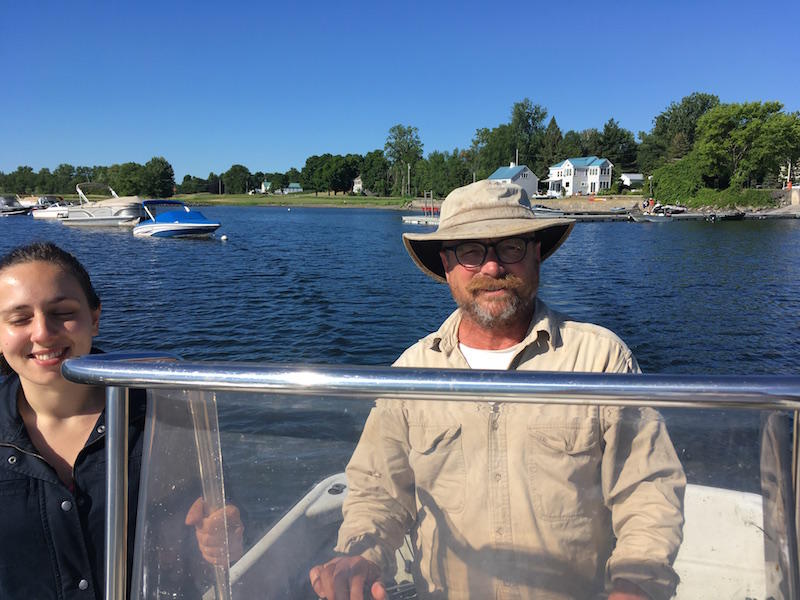
Once we are on land, the work begins. Mark and Lena crunch their way across the rocky shore, scooping up young birds and checking them for bands. Those without them are examined and aged, and a band - a simple numbered strip of metal - is fastened onto their leg. The information collected from the bands over multiple visits will allow us to estimate how many young birds survive to fledging, when they are able to fly and are no longer acutely vulnerable to predation.
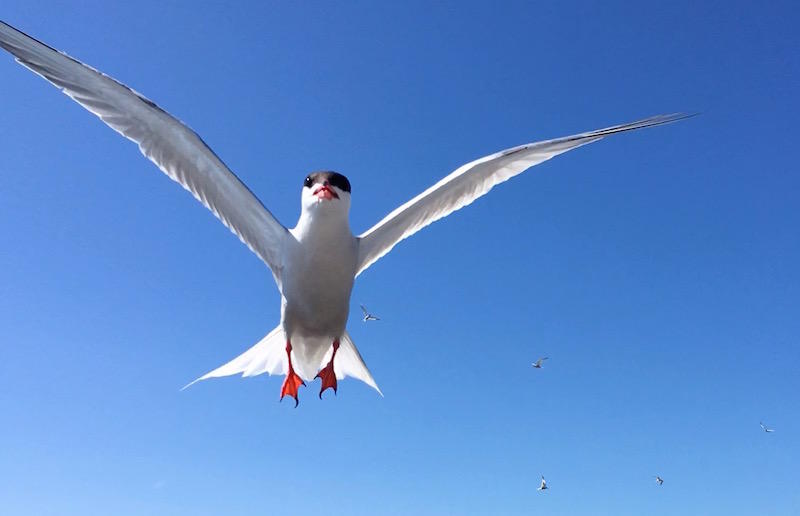
Next, we climb up a steep bank to the top of the island. Here, patchy grasses and plywood “nest huts” conceal an amazing quantity of tern nests and young. As we move around this landscape we look like we are playing an absurd game of twister; to avoid stepping on unseen nests every foot has to be placed with care, and we end up standing with legs spread far apart on patches of bare ground as we shout nesting codes to each other over the babble of the birds. We mark each new nest site with a numbered flag, and at each previously marked site we check the condition and number of eggs. I learn a few simple but beautiful ways to tell whether eggs are still being incubated: first, by feeling for warmth radiating from them, and second, by looking to see if they are sunk into the structure of the nest. An incubating parent turns their eggs constantly to give them even heat, so actively incubated eggs are always lying lightly on the nest's surface.
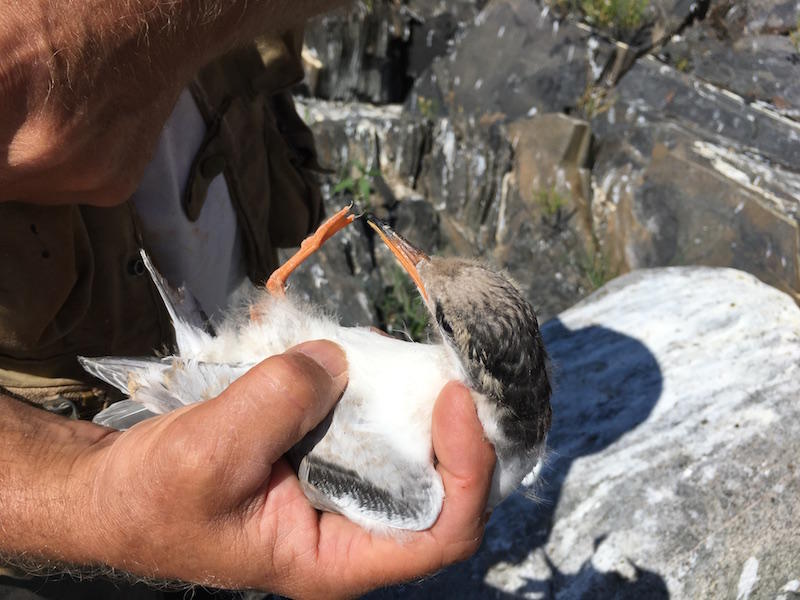
Tern chicks are precocial, which means that they are born feathered, with eyes open, almost immediately able to waddle around in an endearing fashion. We encounter them at every stage of infancy, from a peep – an egg with a tiny chip missing and a chick visible inside – to gangly teenagers with wings akwardly askew, just on the edge of being able to fly. One of these actually does fly away after we have checked its band number, surprising us all (including, perhaps, itself).
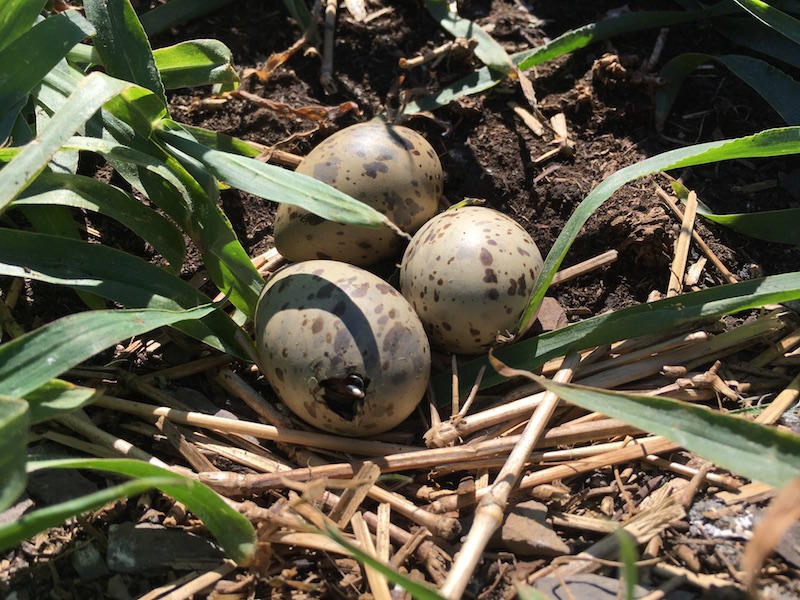
Lena finds a beautiful downy feather, which Mark informs us is from a Great Horned Owl – a significant predator here on the lake. Another nest site, at Gramma’s Island, was recently destroyed by owl predation, so Mark is on the lookout for signs of increased mortality here. The behavior of these birds indicates to him that the colony is still doing well – the birds actively attack us and quickly return to their nests after being disturbed, where frequent predation would have made them skittish and shy. We also find that many of the terns from Gramma’s have re-nested at Popasquash Island, so we have a new batch of eggs and chicks on the way!
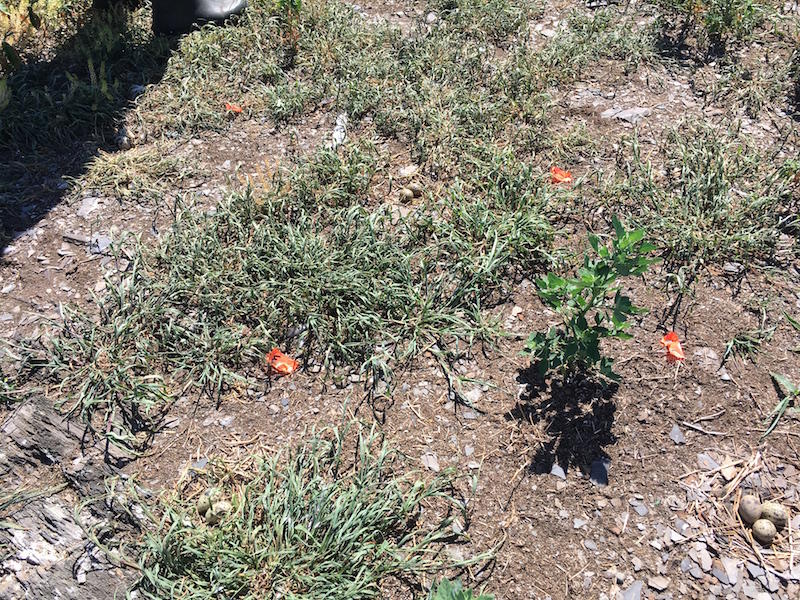
A hectic hour and a half after our arrival, I climb back on board with a heavily scribbled data sheet in hand, sporting a few new dents on my bike helmet. I am dizzy, and I don't think it's only because I may have a tern-induced concussion. My senses are abuzz. The sound of hundreds of birds screaming; the smell of their excrement; the constant motion of fluttering wings around my head - all these experiences are taking hold in me as we start up the motor and lift the anchor. And as we pull away from the beach of Popasquash Island, I am struck by how this place of life has proven to be saturated with death. Walking its shores, I became inured to the sight of deceased chicks and fledglings, rotting seagull carcasses, and uneaten fish strewn over the rocks and hummocky grasses. Lena even found the perfectly bleached, delicate skull of an adult tern balanced atop a rock.
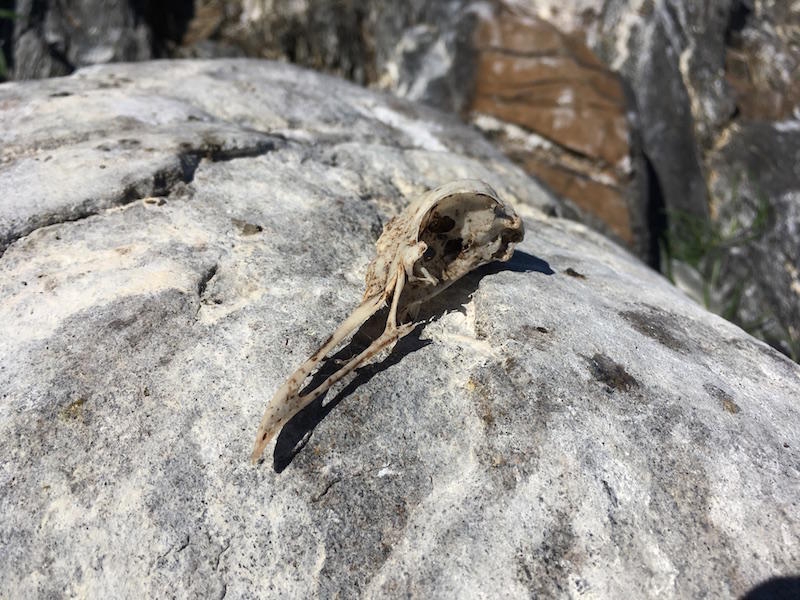
It’s hard to believe that such disorder and entropy are healthy parts of life in a tern colony. But from everything I’ve seen with my own eyes, and on the basis of Mark’s thirty-odd years of experience, it seems that is the case. And as I consider more closely, I realize that the same rule applies to natural systems everywhere we look - even those with which we interact in our daily lives, and in which we would like to conceal it from view. Thinking of the tern colony in this sense I am inclined to see it as a modern-day vanitas painting - a medieval art form intended to remind viewers of their mortality, and to exult them to face death with repentence and Christian virtue. Maybe this could be a little more cheerful than a straight up "Memento Mori," though. Because side-by-side with death on Popasquash Island are the chirping young and sharp-beaked adults whose beauty and ferocity are a celebration of life as a Common Tern. And in their case, this life is made out of fish and ends among the sparsely vegetated rocks where it hatched from a pointy, brown-spotted egg.
